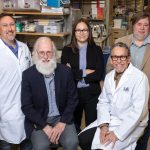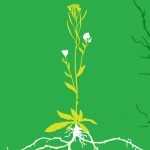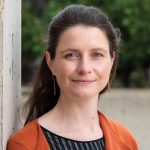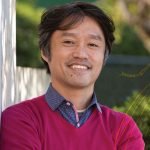Over the past few years, the Salk Institute has embraced a new focus: adaptation for a changing world. To achieve this, we are taking an increasingly holistic approach to research to better protect our health and the health of the planet. As we do so, I can’t help but notice that our plant scientists have already begun implementing this approach, allowing for our collective growth well into the future.
That future will undoubtedly include a changing climate, and Salk is fully invested in the effort to help mitigate its damaging effects. As you’ll learn in this issue of Inside Salk, several of our researchers played early, instrumental roles in sequencing the genome of the plant Arabidopsis thaliana, a ubiquitous model organism that has been used to unravel many basic biological functions over the past century. As part of our Harnessing Plants Initiative, researchers are now using those fundamental discoveries to develop resilient plants that can thrive in harsh environments, as well as crops with roots that capture and store excess carbon dioxide from the atmosphere, preventing further damage to our planet.
Indeed, our plant scientists themselves are a model for how a collaborative approach to exploring the foundations of life can often lead to innovative solutions for global problems.
This issue also profiles Assistant Professor Kenta Asahina, who shares how insects and humans are similar, including our need for social interaction and the way genetic mutations may cause disease. We also sit down with Staff Scientist Courtney Glavis-Bloom, whose goal of finding new treatments for Alzheimer’s disease is motivated by a personal connection, and with Postdoctoral Fellow Helen McRae, who is looking for new ways to use the body’s immune cells to fight cancer.
In the following pages we also share more about our vision for the future of science at Salk. Our five-year scientific and philanthropic initiative, the Campaign for the Future: Building a More Resilient World, has launched, thanks to the transformative gift by Joan and Irwin Jacobs (read the Winter 2021 issue of Inside Salk for full details). It’s undeniable that science and technology are rapidly changing and, as stewards of Jonas Salk’s legacy, it is our responsibility to meet the most pressing challenges head-on and to ensure that the next 60 years of Salk science are as impactful to the world as the first 60.
Salk’s Campaign is focused on three key elements: people, technology and space. With your support, we can build the centerpiece of this initiative—the Joan and Irwin Jacobs Science and Technology Center—and fulfill each of these areas of priority. The Institute envisions more lab space for discoveries, we intend to outfit the new building with leading-edge technology, and we intend to recruit and retain talented experts in a variety of disciplines—including some disciplines that didn’t even exist a decade ago. This is an ambitious effort, but one that will further solidify the Institute’s place as a world-renowned research facility for many decades to come.
As summer approaches, I hope you will take the opportunity to learn more about Salk’s Campaign for the Future (salk.edu/resilient). The Jacobs have generously given the Institute a challenge to raise $200 million to match their $100 million gift by September 30, 2022. Please consider meeting the Jacobs’ challenge by supporting Salk’s Campaign—and joining us for the next phase of our growth.
Sincerely,

Fred H. Gage
President, Salk Institute


























































